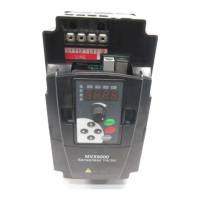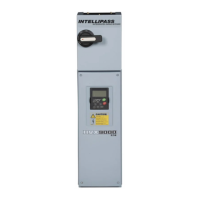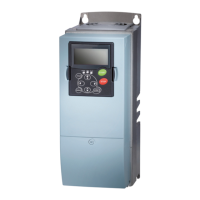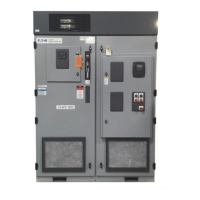Engineering
04/10 MN04020001Z-EN
26
Safety and switching
Fuses and cable cross-sections
The fuses and wire cross-sections allocated for power-side
connections depend on the rated mains current I
LN
of the
frequency inverter (without mains reactor).
The recommended fuses and their assignment to the frequency
inverters are listed in page 157 the appendix.
The national and regional standards (for example VDE 0113, EN
60204) must be observed and the necessary approvals (for
example UL) at the site of installation must be fulfilled.
When the device is operated in a UL-approved system, use only
UL-approved fuses, fuse bases and cables.
The leakage currents to ground (to EN 50178) are greater than
3.5 mA. The connection terminals marked PE and the housing
must be connected with the ground circuit.
The leakage currents for the individual performance variables are
listed in the appendix on page 147 ff.
Cables and fuses
The cross-sections of the cables and line protection fuses used
must correspond with local standards.
For an installation in accordance with UL guidelines, the fuses and
copper cable that are UL-approved and have a heat-resistance of
+60/75 °C are to be used.
Use power cables with insulation according to the specified mains
voltages for the permanent installation. A shielded cable is not
required on the mains side.
A completely (360°) shielded low impedance cable on the motor
side is required. The length of the motor cable depends on the
RFI class and must not exceed 30 m for the M-Max
TM
.
Residual-current device (RCD)
RCD (Residual Current Device): Residual current device, residual
current circuit breaker (FI circuit breaker)
Residual current circuit breakers protect persons and animals from
the existence (not the origination) of impermissibly high contact
voltages. The prevent dangerous, in cases deadly injuries caused
by electrical accidents and also serve as fire prevention.
Frequency inverters work internally with rectified AC currents. If an
error occurs, the DC currents can block an RCD circuit breaker of
type A from triggering and therefore disable the protective
functionality.
Safety-relevant leakage currents can occur while handling and
when operating the frequency inverter, if the frequency inverter is
not grounded (because of a fault).
Leakage currents to ground are mainly caused by foreign
capacities with frequency inverters; between the motor phases
and the shielding of the motor cable and via the Y-capacitors of
the noise filter. The size of the leakage current is mainly dependent
upon the:
• length of the motor cable,
• shielding of the motor cable,
• height of the pulse frequency (switching frequency of the
inverter),
• design of the noise filter,
• Grounding measures at the site of the motor.
h
Caution!
When selecting the cable cross-section, take the voltage
drop under load conditions into account.
The consideration of other standards (e.g. VDE 0113 or
VDE 0289) is the responsibility of the user.
h
Caution!
The specified minimum PE conductor cross-sections (EN
50178, VDE 0160) must be maintained.
h
Choose the cross-section of the PE conductor in the motor
lines at least as large as the cross-section of the phase
lines (U, V, W).
j
Warning!
With frequency inverters, only AC/DC sensitive residual
current circuit breakers (RCD type B) are to be used
(EN 50178, IEC 755).
Identification on the residual-current circuit-breakers
AC/DC sensitive
(RCD, type B)
h
Caution!
Debounced inputs may not be used in the safety
circuit diagram.
Residual current circuit breakers (RCD) are only to be
installed between the AC power supply network and the
frequency inverter.
h
The leakage current to ground is greater than 3.5 mA with
a frequency inverter. Based on the requirements of
EN 50178, an increased ground (PE) has to be connected.
The cable cross-section must be at least 10 mm
2
or
consist of two separately connected ground cables.
h
As long as you use residual current circuit breakers, they
must be suitable for:
• the protection of installations with DC current
component in case of fault scenario (RCD type B),
• high leakage currents (300 mA),
• brief discharges of pulse current spikes.

